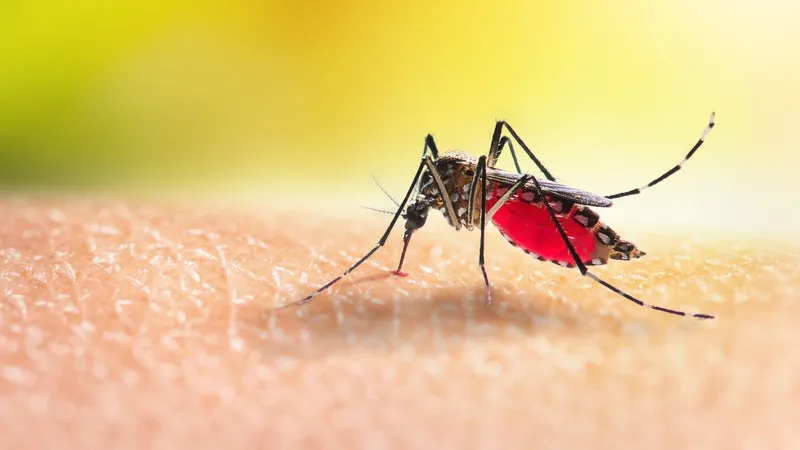Why Mosquitoes Are Especially Dangerous Right Now
This year, it seems like mosquitoes have gone from being an irritating summer staple to a genuine health threat. Across the U.S., reports of mosquito-borne diseases are on the rise, creating concern in communities nationwide. In Massachusetts, for instance, several towns have taken the drastic step of shutting down public parks and outdoor areas after officials detected mosquitoes carrying Eastern equine encephalitis (EEE), a virus that is not only rare but also potentially deadly. This isn't an isolated incident; the threat is real and widespread.
Even high-profile figures aren’t immune to these risks. Dr. Anthony Fauci, who served as the nation’s top infectious-disease expert, was recently hospitalized with West Nile virus, another serious illness spread by mosquitoes. Remarkably, he reportedly contracted it from a mosquito in his own backyard. These cases are more than just alarming headlines; they’re indicators of a broader trend that’s making this year particularly dangerous for anyone venturing outdoors.
Is This a Particularly Bad Year for Mosquitoes?
So, why does it seem like mosquitoes are more of a threat this year than in the past? A combination of environmental factors is at play, creating a perfect storm for these disease-carrying insects. Warmer weather patterns, driven by climate change, have extended the mosquito season and expanded the habitats where they can thrive. Increased humidity, coupled with more frequent and intense rainfall, has led to ideal breeding conditions for mosquitoes, allowing their populations to grow rapidly in regions that might not have seen such high numbers before.
Moreover, global travel and trade have made it easier for mosquito-borne diseases to spread to new areas. Viruses that were once confined to certain regions are now appearing in places where they hadn’t been a concern. This is particularly worrying because the local population may not have immunity to these diseases, making outbreaks more severe and harder to control.
The Rise of Mosquito-Borne Diseases
The surge in mosquito populations isn’t just a minor inconvenience—it’s a serious public health issue. Mosquitoes are known vectors for a variety of dangerous diseases, and this year, they seem to be carrying more of them than usual. Eastern equine encephalitis (EEE) and West Nile virus are among the most concerning. EEE is particularly deadly, with a mortality rate of around 30% in those who develop severe symptoms, and survivors often face significant long-term neurological damage. West Nile virus, while usually less severe, can still cause serious complications, especially in older adults and those with weakened immune systems.
Other mosquito-borne diseases, such as dengue fever, Zika virus, and chikungunya, are also on the radar of health officials. While these viruses are more common in tropical and subtropical regions, there’s concern that they could become more widespread in the U.S. as mosquitoes carrying these diseases expand their range due to warming temperatures. The Centers for Disease Control and Prevention (CDC) have been monitoring these trends closely, and their findings suggest that we need to be prepared for the possibility of new outbreaks.
What Can We Expect in the Future?
Unfortunately, the outlook for the future isn’t very promising. Experts warn that as climate change continues to accelerate, we’re likely to see even more mosquitoes and, consequently, more mosquito-borne diseases. Warmer temperatures not only extend the mosquito season but also allow mosquitoes to survive in regions where they previously couldn’t, bringing new risks to areas that were once considered safe. This shift in mosquito behavior is likely to increase the frequency and severity of outbreaks, posing a growing threat to public health.
Additionally, the development of urban areas, with their abundance of standing water and artificial environments, provides perfect breeding grounds for mosquitoes. As cities expand and create more of these habitats, the potential for human-mosquito interactions increases, heightening the risk of disease transmission. This urbanization, combined with the effects of climate change, means that we could see mosquito-borne diseases become a more persistent problem in the U.S. and other temperate regions.
How to Protect Yourself
With the risks becoming more apparent, it’s crucial to take steps to protect yourself and your loved ones from mosquito-borne diseases. Here are some practical tips to help reduce your exposure:
- Use insect repellent: When spending time outdoors, especially during peak mosquito hours (dawn and dusk), apply a reliable insect repellent that contains DEET, picaridin, or oil of lemon eucalyptus. Reapply as directed, especially if you’re sweating or swimming.
- Wear protective clothing: Long sleeves, pants, and socks can help reduce the amount of exposed skin that mosquitoes can target. Opt for light-colored clothing, as mosquitoes are attracted to darker colors.
- Eliminate standing water: Mosquitoes breed in stagnant water, so regularly check your yard and home for places where water collects, such as birdbaths, flowerpots, gutters, and kiddie pools. Empty these regularly or treat them with mosquito dunks to kill larvae.
- Install screens: Make sure windows and doors are fitted with screens to keep mosquitoes from entering your home. Repair any holes or tears in existing screens.
- Avoid peak mosquito times: If possible, limit outdoor activities during dawn and dusk, when mosquitoes are most active.
Staying informed about local mosquito activity is also important. Many areas now have mosquito control programs that provide updates on disease risks and spraying schedules. By taking these precautions and staying vigilant, you can help protect yourself and others from the growing threat of mosquito-borne diseases.
As we navigate this challenging landscape, it’s clear that mosquitoes are more than just a summertime annoyance. They’re a serious and evolving public health threat that requires our attention and action. Whether through personal prevention measures or community-wide efforts, we all have a role to play in mitigating the risks associated with these dangerous insects.



